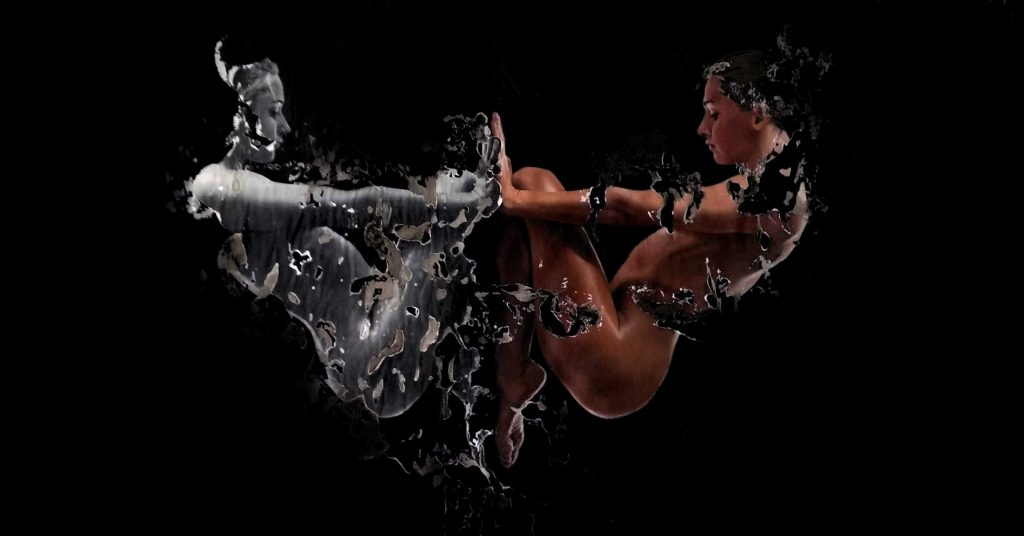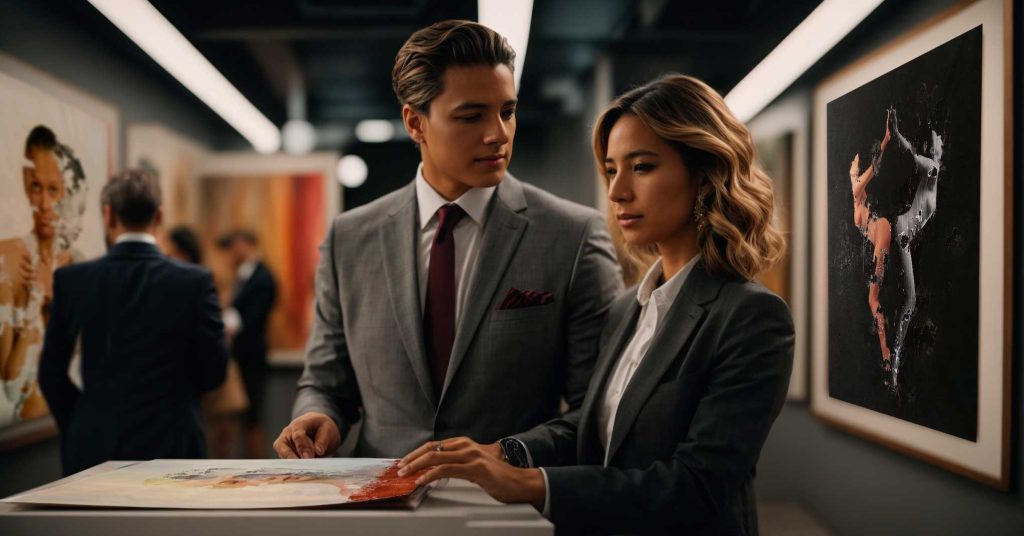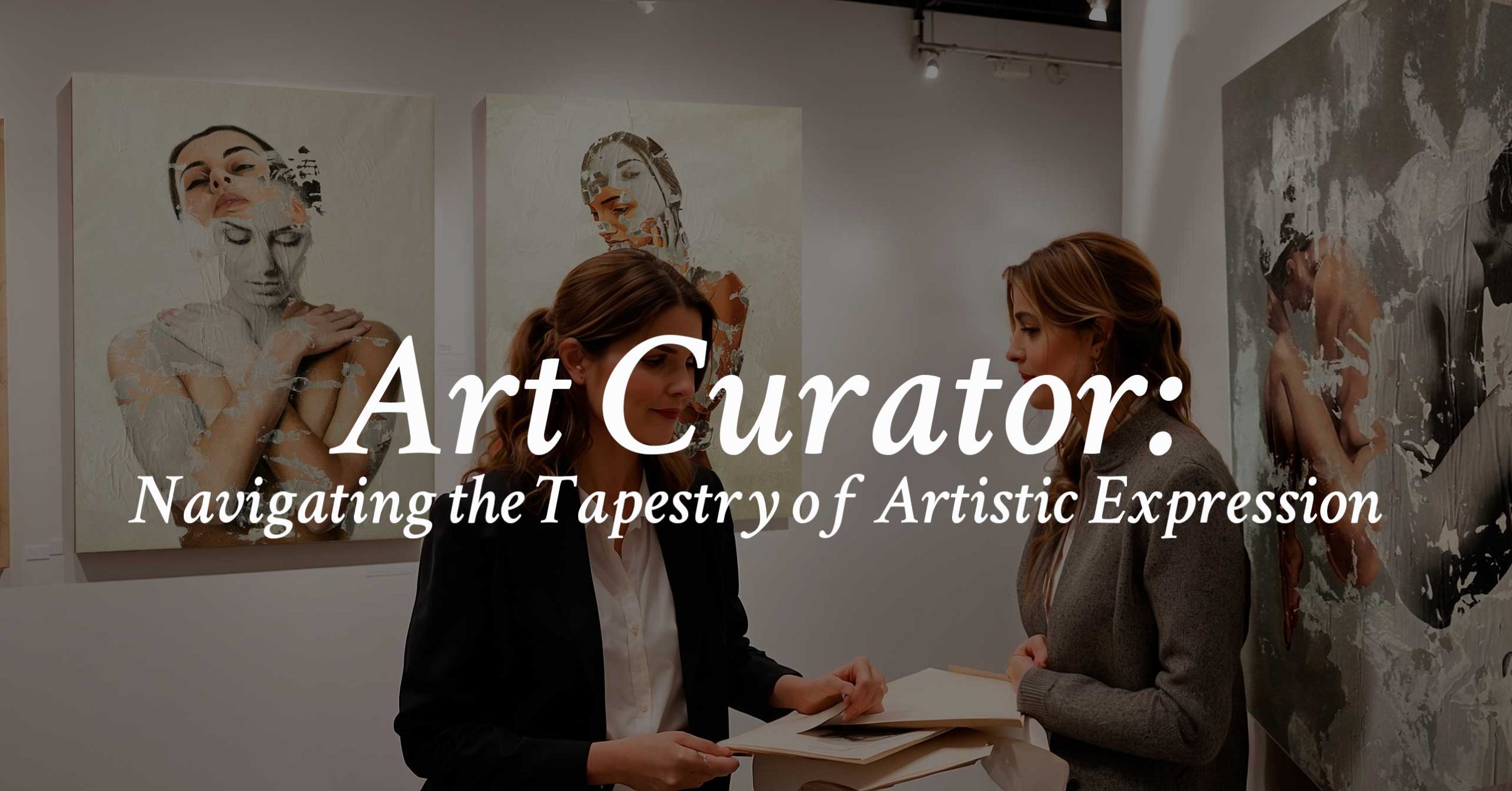
- Introduction
- What is an Art Curator?
- Relationship Between Art Curator and Artists
- Art Curator Responsibilities
- Average Salary of an Art Curator
- Difference Between an Art Curator and an Art Critic
- How to Curate an Exhibition
- Curatorial Practice: Crafting Artistic Narratives
- Art Market and Art Curators: Crafting Value in the Curation Tapestry
- Skills Required for Art Curators
- Education Required for Art Curation: Beyond Passion to Expertise
- Career Opportunities for Art Curators: Navigating the Vast Canvas
- Conclusion
- FAQs About Art Curators
Introduction
Welcome to the captivating world of art curation, where creativity intertwines with historical narrative and the curator becomes a master weaver of stories. In this article, we delve into the intricate realm of curatorial expertise, exploring the daily rituals, collaborative endeavors with artists, preservation techniques, market impact, essential skills, and diverse career opportunities that shape the vibrant canvas of art curation. Join us on this insightful journey as we unravel the threads of the curator’s role, from crafting narratives to preserving artistic heritage, and discover how these custodians of culture contribute to the ever-evolving landscape of the art world.
What is an Art Curator?
In the grand tapestry of the art world, curators emerge as master weavers. Beyond selecting artworks, they sculpt exhibitions that weave stories, leaving an indelible mark on the canvas of culture.
Curators don’t merely assemble art; they craft visual narratives. Imagine them as literary alchemists, blending different artistic voices into a cohesive and compelling story within the confines of a gallery or museum space.
They’re not just selectors; they’re architects of experience. Every exhibition is a curated journey, an orchestrated sequence that guides visitors through a carefully constructed narrative. Curators shape the viewer’s perception and emotional connection to the artworks.
A curator’s skill lies in navigating the diverse landscape of artistic styles, mediums, and cultural contexts. They harmonize disparate elements, creating a symphony that resonates with the audience.
What does a curator’s day look like?
Morning Rituals: Research and Coffee
The day often begins with extensive research. Curators delve into the realms of art history, current art movements, and emerging artists, fueled by copious amounts of coffee.
Afternoon Adventures: Gallery Walks and Artist Meetings
Afternoons are filled with gallery walks and meetings with artists. Curators explore new spaces, scout potential artworks, and engage in discussions with artists to understand the stories behind their creations.
Administrative Ballet: Budgets and Logistics
Behind the scenes, there’s an administrative ballet. Curators meticulously plan budgets, coordinate logistics, and ensure that every piece selected fits seamlessly into the exhibition puzzle.
Evening Contemplation: Curatorial Vision and Reflection
Evenings are dedicated to contemplation. Curators refine their curatorial vision, contemplating how each piece contributes to the overarching narrative. It’s a time for reflection and adjustment.
Late-Night Artistic Alchemy: Installation Coordination
As the day winds down, the magic intensifies. Late-night hours are often dedicated to coordinating installations, ensuring each artwork finds its perfect place, creating a visual symphony within the exhibition space.
How do curators choose artworks?
Curators carefully choose artworks through a delicate dance, considering themes, historical context, and the artist’s intent to create a harmonious dialogue within the exhibition. This involves conceptualizing the exhibition’s theme, engaging in artistic conversations with creators to understand the story behind the artwork and its alignment with the overall narrative. Curators perform a balancing act, ensuring diversity while maintaining cohesion, creating a visual dialogue that resonates with the audience. The spatial arrangement is pivotal as curators envision the flow of the exhibition, considering how each artwork interacts and contributes to the overall aesthetic experience. Ultimately, curators select artworks that evoke emotions and engage the audience, aiming to create an immersive experience where each piece adds a layer to the viewer’s journey through the curated space.
Relationship Between Art Curator and Artists
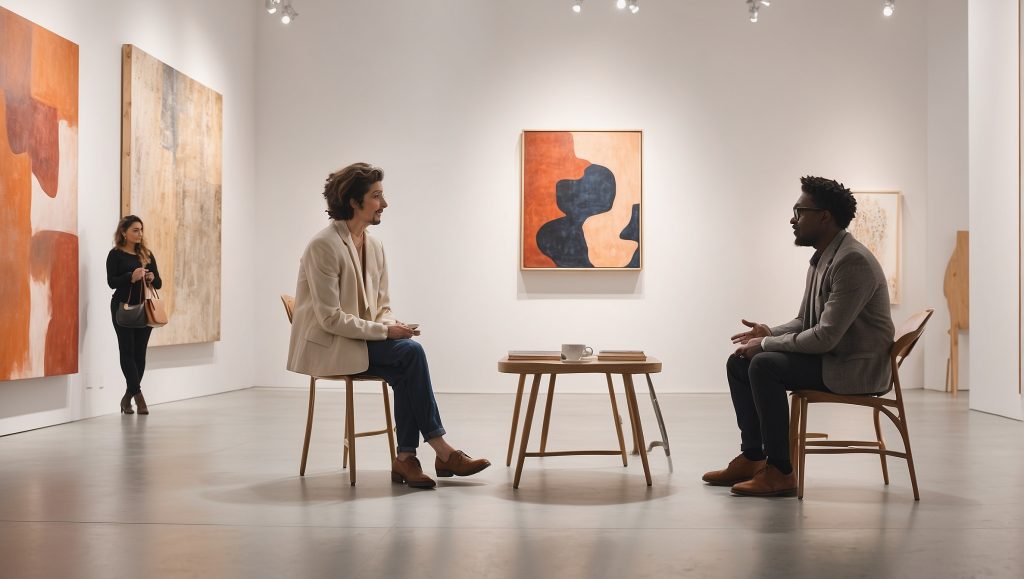

Picture a dance between creators and curators. It’s not just about hanging paintings; it’s about nurturing a symbiotic relationship where the artist’s vision harmonizes with the curator’s curation prowess.
A Ballet of Ideas: Shared Vision and Collaboration
The relationship between artists and curators is a ballet of ideas, where creativity intertwines. Curators don’t merely display artworks; they coalesce with artists to bring their visions to life.
Collaborative Brainstorming: Shaping Exhibition Themes
The collaboration begins with brainstorming sessions. Artists share their inspirations, and curators contribute their insights. Together, they mold the exhibition’s theme, ensuring it becomes a canvas for artistic dialogue.
Curators as Advocates: Nurturing Artistic Identity
Curators become advocates for artists. They delve into the core of an artist’s practice, understanding the nuances that define their work. This deep understanding allows curators to champion the artist’s identity within the curated space.
The Artistic Playground: Providing Creative Freedom
Curators provide a playground for artistic expression. It’s a space where artists can experiment, push boundaries, and showcase their work in a context that enhances its impact.
How do artists and curators collaborate?
Collaboration is key. Artists share their vision, and curators provide the stage. It’s a partnership that transforms artworks into an immersive experience.
Initial Dialogues: Understanding Artistic Intent
The collaboration begins with dialogues. Artists articulate their intent, sharing the stories embedded in their creations. Curators actively listen, aiming to understand the deeper narrative that will unfold within the exhibition.
Space as a Canvas: Coordinating Artistic Installations
Curators act as choreographers in the spatial dance of installations. They work closely with artists, determining the optimal placement for each artwork to create a harmonious visual symphony within the exhibition space.
Feedback Loop: Iterative Conversations
Collaboration thrives on communication. Artists and curators engage in a continuous feedback loop, refining the vision as the exhibition takes shape. It’s a dynamic process where ideas evolve and transform.
Curation as Storytelling: Weaving Narratives Together
Curators don’t just curate; they tell stories. In collaboration with artists, curators weave narratives that transcend individual artworks, creating a collective tale that resonates with the audience.
Mutual Growth: Fostering Artistic Evolution
The collaboration extends beyond a single exhibition. Curators become catalysts for artistic evolution, providing a platform for growth and exposure that propels artists into new realms of creativity.
Exhibition Openings: Celebrating Artistic Achievements
The culmination of this partnership is the exhibition opening. Artists and curators join forces to celebrate not only the artworks but the collaborative journey that has transformed artistic visions into a captivating experience for viewers.
The dance between artists and curators is a dynamic interplay of creativity and curation, where each partner contributes to the rhythm of the art world, creating a symphony of expression that reverberates beyond the gallery walls.
Art Curator Responsibilities
Curators don multiple hats – custodians of culture, storytellers, and guardians of historical narratives. Their responsibilities transcend arrangement; they breathe life into spaces, infusing them with meaning.
Custodians of Culture: Preserving Artistic Heritage
Curators stand as custodians of cultural legacies. They safeguard artworks, ensuring that the rich tapestry of human expression is preserved for future generations. Their role goes beyond the contemporary; it extends to the timeless.
Storytellers Extraordinaire: Crafting Narratives Through Art
Each curated space is a chapter in a larger narrative. Curators skillfully weave stories, connecting artworks into a cohesive tale that resonates with visitors. Their narratives transcend individual pieces, creating a symphony of meaning.
Guardians of Historical Narratives: Connecting Past and Present
Curators bridge the gap between history and the present. They curate exhibitions that reflect the historical context of artworks, fostering a dialogue between past and present that enriches our understanding of both.
How do curators preserve artwork?
Preservation is an art. Curators employ conservation techniques, climate control, and meticulous documentation to ensure artworks endure the test of time.
The Science of Conservation: Protecting Art at a Molecular Level
Curators delve into the science of conservation. They collaborate with conservation experts to understand the chemical composition of artworks, implementing measures to prevent deterioration and preserve the essence of each piece.
Climate Control Mastery: Creating Art-Friendly Environments
Maintaining the right climate is crucial. Curators meticulously control temperature, humidity, and lighting within exhibition spaces, creating environments that protect artworks from the ravages of time and environmental factors.
Documentation as Time Capsule: Recording Every Detail
Every stroke, every nuance is documented. Curators maintain meticulous records, creating a time capsule of each artwork’s journey. This documentation not only aids in preservation but also contributes to the broader understanding of an artwork’s history.
Restoration Wisdom: Breathing New Life into Aging Artworks
When artworks show signs of wear, curators engage in the delicate art of restoration. They collaborate with skilled conservators to breathe new life into aging pieces, respecting the artist’s intent while ensuring longevity.
Educational Initiatives: Fostering Conservation Awareness
Curators extend their preservation efforts beyond the gallery. They engage in educational initiatives, fostering awareness about the importance of art conservation and the delicate balance between showcasing and protecting artistic treasures.
Preserving artworks isn’t just about maintaining physical integrity; it’s about ensuring that the stories they tell endure across generations. Curators, as the stewards of these narratives, undertake the responsibility of both guardianship and storytelling, ensuring that the art of today remains a vibrant part of our cultural legacy tomorrow.
Average Salary of an Art Curator


Passion meets paycheck. Art curators navigate the delicate balance of following their passion and sustaining themselves financially. Let’s delve deeper into the monetary palette of an art curator.
Are salaries influenced by the type of institution?
Absolutely. Curators in prestigious museums might command higher salaries than those in smaller galleries. The institution’s scale and prominence play a significant role.
Do curators get bonuses for successful exhibitions?
In some cases, yes. A well-received exhibition that draws crowds and positive reviews may result in bonuses or recognition within the art community.
Difference Between an Art Curator and an Art Critic
Critics dissect; curators connect. Discover the nuances that set apart the roles of those who critique from those who curate.
| Aspect | Art Curator | Art Critic |
| Role | Selects and organizes artworks for exhibits | Analyzes and evaluates artworks through critique |
| Function | Manages collections, plans exhibitions | Offers opinions, interpretations, and reviews |
| Involvement | Works closely with artists and galleries | Independently assesses artworks |
| Goal | Creates cohesive exhibitions, tells a story | Provides insights, sparks dialogue |
| Focus | Presentation, context, and narrative | Aesthetic, conceptual, and technical aspects |
| Audience Interaction | Engages viewers in a curated experience | Influences public perception through writing |
| Decision-making | Selection of artworks for display | Personal evaluation and interpretation |
| Relation to Artists | Collaborates, supports, and promotes | May provide constructive or critical feedback |
Curators craft exhibitions, weaving purpose into visual displays. Meanwhile, critics analyze art, painting detailed portraits with words. Both storytellers, the curator shapes a visual narrative, and the critic pens an interpretive sonnet. It’s the blend of curation and critique that forms the essence of appreciating art on the canvas of perception.
Can a curator also be a critic?
Certainly. Many curators possess a keen analytical eye and contribute to critical discourse. It’s a dynamic intersection where curation and critique converge.
Analytical Curators: Navigating Dual Roles
Some curators seamlessly navigate both roles. They analyze artworks with the precision of a critic while infusing their exhibitions with the narrative richness of a curator. This dual expertise adds depth to their curation.
Curation as Critique in Action
Curators critique through curation itself. The act of selecting, arranging, and contextualizing artworks is a form of critique. It’s a silent commentary on what they believe deserves attention and how pieces relate to each other.
Contributions to Discourse: Enriching the Art Conversation
Curators who engage in critical discourse contribute to the broader conversation about art. Their unique perspective adds layers to the dialogue, enriching the understanding of artworks beyond individual critiques.
Curatorial Critique: Evaluating Within a Narrative Framework
Curators often evaluate artworks within the context of a larger narrative. They may not assign numerical ratings, but their curation itself is a form of critique that communicates preferences, interpretations, and artistic values.
Collaboration of Perspectives: Enhancing the Artistic Experience
When a curator wears the hat of a critic, it fosters collaboration between perspectives. It invites viewers to engage with artworks not only on a visual level but also on an intellectual one, enhancing the overall artistic experience.
In the intricate dance between curation and critique, some curators find a rhythm that harmonizes both roles, contributing to a nuanced and enriched understanding of art within the broader artistic discourse.
How to Curate an Exhibition
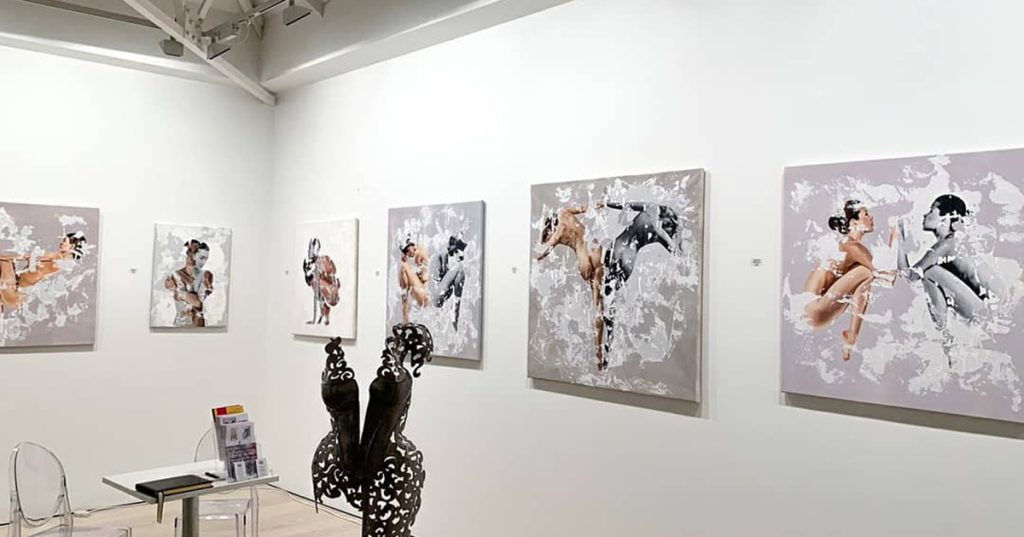

Curating an exhibition is akin to orchestrating a symphony. From selecting pieces to orchestrating their arrangement, it’s a delicate dance. Let’s unveil the secrets behind a seamlessly curated exhibition.
Conceptualizing the Theme: The Genesis of Curation
Curating begins with a spark of inspiration. Curators conceptualize a theme that will serve as the backbone of the exhibition. This theme sets the tone, guiding the selection of artworks and shaping the overall narrative.
Navigating the Artistic Landscape: Artist Selection
Curators embark on a journey through the artistic landscape, scouting for artists whose work resonates with the chosen theme. It’s a process of discovery, where each artist becomes a brushstroke in the curator’s canvas of expression.
Artwork Selection: Balancing Diversity and Cohesion
Curators carefully select artworks, aiming for a delicate balance between diversity and cohesion. Each piece must contribute to the overarching theme while bringing a unique voice to the exhibition.
Spatial Choreography: Planning the Layout
The spatial arrangement is an art form in itself. Curators envision the exhibition’s layout, considering the flow of the narrative, the interplay of artworks, and the engagement of viewers as they navigate through the curated space.
Sculpting Atmosphere: Lighting and Ambiance
Lighting is a curator’s paintbrush. They sculpt the atmosphere, using light to accentuate certain elements, create shadows, and evoke specific moods. The ambiance becomes a vital component of the overall experience.
Dynamic Installations: Bringing Art to Life
Installation is the heartbeat of curation. Curators face the challenge of translating their vision into a three-dimensional space. This involves considering spatial constraints, wall structures, and the relationships between individual pieces.
What challenges do curators face during installation?
Installation challenges range from spatial constraints to lighting intricacies. Curators must adapt, ensuring each artwork shines in its designated space.
Spatial Puzzle: Navigating Gallery Limitations
Galleries come with their unique spatial challenges. Curators must optimize the available space, considering wall dimensions, architectural features, and the overall layout to create a visually harmonious environment.
Lighting Conundrums: Balancing Illumination
Achieving the perfect lighting is a nuanced challenge. Curators grapple with finding the right balance between natural and artificial light, ensuring each artwork is illuminated in a way that enhances its visual impact.
Preservation Predicaments: Protecting Fragile Art
For delicate artworks, preservation becomes paramount. Curators face the challenge of installing pieces in a way that safeguards their integrity, considering factors like humidity, temperature, and protective casings.
Interactive Installations: Engaging Viewers
Incorporating interactive elements adds another layer of complexity. Curators must seamlessly integrate these features, ensuring they enhance rather than overshadow the primary artworks and engage viewers in a meaningful way.
Adaptability: Navigating Last-Minute Changes
Flexibility is key during installation. Curators might encounter unexpected challenges or decide on last-minute adjustments. Adapting to these changes while maintaining the coherence of the exhibition demands quick thinking and resourcefulness.
Curating an exhibition is a symphony of creativity, logistics, and adaptability. As curators navigate these challenges, they transform spaces into living canvases where art breathes and resonates with the audience.
Curatorial Practice: Crafting Artistic Narratives
Curatorial practice isn’t one-size-fits-all. Whether it’s thematic, chronological, or medium-based, curators employ diverse approaches to breathe life into their exhibitions.
Thematic Weaving: Crafting Narratives Across Artworks
Some curators opt for thematic exhibitions, weaving narratives that transcend individual pieces. Themes become threads connecting diverse artworks into a cohesive, story-driven experience.
Chronological Unfolding: Journeying Through Time
Others embrace a chronological approach, guiding viewers on a journey through time. Exhibitions become historical narratives, showcasing the evolution of artistic movements and individual artists.
Medium-Based Exploration: Celebrating Artistic Forms
Medium-based curation focuses on the materiality of artworks. Whether paintings, sculptures, or digital art, curators celebrate the unique qualities of each medium, creating exhibitions that highlight diverse artistic forms.
How does curatorial style impact audience experience?
Immensely. The curator’s style shapes the narrative, influencing how viewers perceive and engage with the artworks. It’s a curator’s signature on the exhibition.
Narrative Influence: Shaping Viewer Perception
The chosen curatorial style profoundly influences the narrative woven within the exhibition. Viewers experience a thematic journey, a historical exploration, or an immersion into diverse artistic forms, guided by the curator’s intent.
Engagement Dynamics: Viewer-Exhibition Interaction
Curatorial style dictates how viewers interact with artworks. Thematic exhibitions prompt deep contemplation, chronological displays encourage historical reflection, and medium-based curation offers a sensory exploration.
Curation as Artistic Expression: The Curator’s Signature
The curator’s style is an artistic expression in itself. It’s a signature that imprints on the exhibition, leaving an indelible mark on the audience’s experience. The way artworks are arranged, the narratives crafted – all are part of the curator’s unique language.
Emotional Resonance: Impact on Viewer Connection
Viewer emotions are orchestrated by the curator’s style. A thematic approach might evoke specific feelings, a chronological journey may resonate with nostalgia, and a focus on medium can elicit sensory responses. The audience connects emotionally through the curator’s chosen lens.
Memorable Impressions: Lasting Impact
Curatorial style leaves a lasting impression. Viewers remember not just individual artworks but the overall experience curated by the unique approach of the curator. It transforms art appreciation into a dynamic, immersive encounter.
In the realm of curatorial practice, diversity isn’t just about the artworks; it extends to the approaches curators employ. Their choices become the brushstrokes that paint the canvas of the exhibition, shaping the narrative, influencing audience experience, and leaving a lasting impact on the ever-evolving dialogue between art and its viewers.
Art Market and Art Curators: Crafting Value in the Curation Tapestry
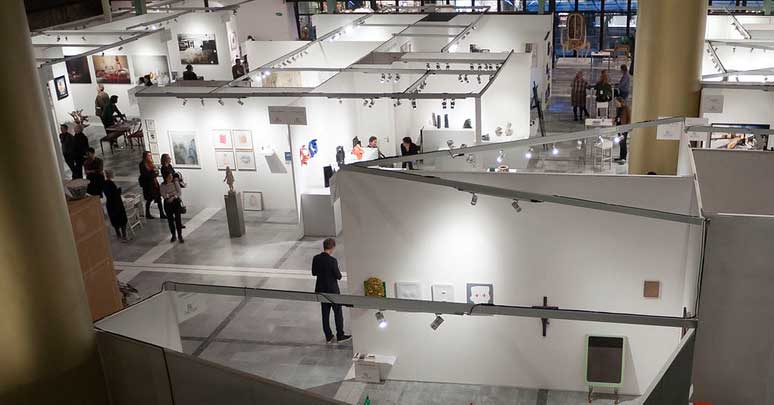

In the intricate dance of the art world, curators emerge as choreographers, influencing not only aesthetics but also the economic ballet of the art market.
Choreographing Value: The Role of Curators
The relationship between art curators and the art market is symbiotic. Curators, akin to choreographers, play a crucial role in shaping the perceived value of art. Their choices in curation extend beyond aesthetics, influencing market trends and contributing to the economic narrative of the art world.
Trends Set by Curatorial Choices: Shaping Market Dynamics
Art markets aren’t static; they ebb and flow with trends. Curators, as trendsetters, introduce artists, styles, and thematic movements through their exhibitions. These choices resonate with collectors, shaping the dynamics of the market and propelling artists into the spotlight.
Market Impact of Curation: Beyond Aesthetic Significance
The impact of curatorial choices reverberates in auction houses, galleries, and private collections. Curators craft narratives that extend beyond aesthetic significance, shaping the market’s perception of the value and significance of artworks.
Curatorial Vision and Market Trends: A Harmonious Interplay
The interplay between curatorial vision and market trends is dynamic. As curators curate exhibitions aligned with contemporary tastes, they simultaneously contribute to and reflect the evolving currents of the art market.
In the realm where curators curate dreams, their influence extends beyond the gallery walls, intertwining with the economic currents of the art market. The choices they make, the narratives they weave, all become integral brushstrokes in the vibrant tapestry of art, where value is crafted, trends are set, and the dance between curators and the art market unfolds.
Skills Required for Art Curators


Curators aren’t just art aficionados; they’re skilled navigators in a sea of creativity. Let’s unveil the essential skills required to curate art with finesse.
Creative Vision: The Artistic Compass
Creativity stands as the cornerstone. Curators must possess a visionary outlook, envisioning unique narratives, and curating experiences that transcend the ordinary.
Research Mastery: Delving into Artistic Realms
Beyond creativity, research skills are paramount. Curators dive into the realms of art history, current movements, and emerging artists, ensuring their exhibitions are informed and contextualized.
Communication Prowess: Bridging Art and Audience
Curators are communicators. They articulate their curatorial vision, engage with artists, and bridge the gap between art and audience, fostering a connection that enhances the viewer’s experience.
Organizational Agility: Juggling Multiple Hats
Curators wear many hats. Organizational skills are vital as they navigate the intricacies of artist collaborations, budget planning, and the logistical dance of exhibition installations.
Adaptability: Navigating the Unpredictable
In the dynamic art world, adaptability is key. Curators must navigate unexpected challenges, from last-minute changes to unforeseen spatial constraints, with poise and resourcefulness.
Analytical Insight: Curating with Intention
While creativity is paramount, research, communication, and organizational skills are equally crucial. Curators analyze artworks with intention, ensuring each piece contributes to the curated narrative.
Collaborative Spirit: Engaging with Artists and Teams
Curators are collaborators. They engage with artists, museum teams, and various stakeholders. A collaborative spirit fosters a synergistic environment, enriching the curation process.
Time Management: Orchestrating Exhibitions Seamlessly
Timeliness is an art form in curation. Curators must manage timelines meticulously, ensuring exhibitions unfold seamlessly, from conceptualization to installation.
Critical Thinking: Curating with Purpose
Curators apply critical thinking to every aspect of curation, from theme selection to artwork placement. It’s about curating with purpose, ensuring each decision aligns with the overarching vision.
Passion for Continuous Learning: Evolving with Art
The art world evolves, and curators must evolve with it. A passion for continuous learning, staying abreast of art trends and cultural shifts, ensures curators remain dynamic and relevant.
Education Required for Art Curation: Beyond Passion to Expertise


Beyond passion lies education. What qualifications propel aspiring curators into the realm of art curation? Let’s delve into the academic palette of art curation.
Relevant Degrees: The Academic Palette
Aspiring curators often pursue degrees in art history, museum studies, or a related field. These academic paths provide a comprehensive understanding of art, history, and the intricacies of curation.
Art History: Understanding the Language of Art
A degree in art history forms the backbone of curatorial education. It equips individuals with the language to interpret artworks, historical context, and the evolution of artistic movements.
Museum Studies: Navigating Curatorial Realms
Museum studies programs delve into the practical aspects of curatorial work. From exhibition planning to collection management, these degrees offer hands-on experiences crucial for a curator’s toolkit.
Related Fields: Diverse Academic Paths
While art history and museum studies are common, related fields such as cultural studies, anthropology, or even fine arts contribute unique perspectives to curatorial practice.
Internships and Practical Experience: Bridging Theory and Practice
Education extends beyond classrooms. Internships and practical experiences, whether in museums, galleries, or cultural institutions, bridge the gap between academic theory and the real-world intricacies of curation.
Can one become a curator without a formal education?
It’s possible but challenging. Many institutions prefer candidates with a relevant degree in art history, museum studies, or a related field. Education provides a strong foundation. Anyway, while formal education is the conventional route, some curators forge a non-traditional path through hands-on experience, mentorships, and self-directed learning.
Career Opportunities for Art Curators: Navigating the Vast Canvas
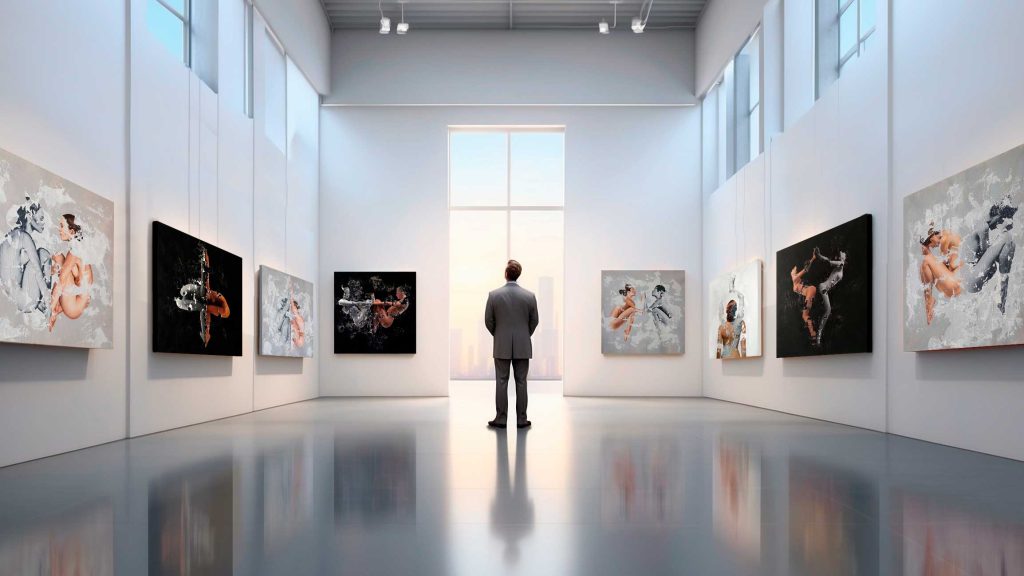

For those with a curator’s eye, the career canvas is vast. From museums to galleries, explore the myriad opportunities awaiting those who curate dreams.
Museum Curator: Guardians of Artistic Heritage
Museum curators safeguard and showcase collections, curating exhibitions that educate and inspire. They play a pivotal role in preserving cultural heritage and shaping the narrative of artistic history.
Gallery Curator: Orchestrating Art Exhibitions
Gallery curators work closely with artists, planning and executing exhibitions that showcase contemporary art. They contribute to the commercial aspect of the art world, promoting artists and facilitating sales.
Independent Curator: Crafting Personal Narratives
Independent curators have the flexibility to curate exhibitions outside traditional institutions. They craft personal narratives, collaborating with various venues to bring art to diverse audiences.
Specialized Curator: Focusing on Specific Genres
Some curators specialize in specific genres like contemporary art, historical artifacts, or even niche categories. They delve deep into their chosen field, becoming experts in particular facets of the art world.
Curatorial Consultant: Guiding Art Projects
Curatorial consultants offer expertise to institutions, galleries, or private collectors on specific art projects. They provide guidance on curation, collection development, and exhibition strategies.
Educational Curator: Bridging Art and Learning
Educational curators work in academic settings, developing programs that bridge art and learning. They engage with students, fostering an understanding and appreciation of art in an educational context.
Conclusion
Art curators: the unseen architects of visual narratives. In a world saturated with images, their curation transcends aesthetics, guiding us through the labyrinth of human expression. Art curator, the heartbeat of the art world, resonates in every brushstroke and exhibition hall.
Art curator, a journey through creativity, history, and imagination. Until next time, keep curating dreams, one masterpiece at a time.
FAQs About Art Curators
- How do curators choose artworks for an exhibition?
- Curators consider themes, historical context, and the artist’s intent, crafting a harmonious dialogue within the exhibition.
- Can a curator also be a critic?
- Absolutely. Many curators possess a keen analytical eye and contribute to critical discourse, where curation and critique converge.
- Are there freelance opportunities for curators?
- Indeed. Curators can freelance, curating independent exhibitions or working with galleries on a project basis. The art world is expansive, offering diverse avenues.
- What challenges do curators face during installation?
- Installation challenges range from spatial constraints to lighting intricacies. Curators must adapt, ensuring each artwork shines in its designated space.
- How does curatorial style impact audience experience?
- Immensely. The curator’s style shapes the narrative, influencing how viewers perceive and engage with the artworks. It’s a curator’s signature on the exhibition.

